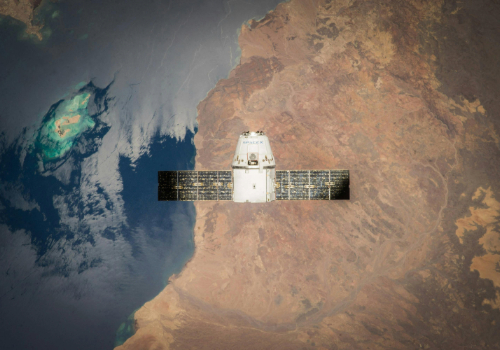Navigating New Space challenges with simulations
December 2, 2024
December 2, 2024
Space is now more accessible than ever, with various sized companies entering the industry with brand new innovations.
However, new innovations also bring new challenges – for example, LEO “mega-constellations”, their routing, and the increasing need for spectrum.
Thankfully many of these New Space challenges can be addressed with simulation tools, which reduce risks and help you save both time and money.
Over the past two decades, there has been a major shift in the space industry.
Instead of being dominated by governments like before, companies of various sizes are now able to take part in space exploration and leading space-related business. This has resulted in many brand new innovations and business ideas around space technologies.
As New Space players have demonstrated – space has become more accessible than ever.
There are various reasons for this. The most significant reason is the cost reduction, and more affordable technology solutions entering the market.
Overall, technology has taken major leaps, which has sped up and lowered the costs of developing space systems and operations, like building and launching satellites.
Companies are identifying new commercial opportunities of space, such as in satellite-based services and communication networks. Even industries that haven’t utilized space technology previously are now recognizing its potential.
However, there are also many challenges that need to be addressed in order to successfully venture into the space industry.
There is an increasing number of applications for space technology. There are more usage scenarios, and some of them are brand new, so points of reference aren’t always available.
Since there isn’t always a point of reference, simulators are a good way of testing how these new applications work in practice. They are a cost-efficient, fast way of solving many design challenges.
By identifying potential issues early, simulations can save both time and money. They can reduce the risk for costly trial-and-error scenarios, as well as having to make corrections after unsuccessful attempts.
Cheaper satellites are one reason for the better accessibility of space. Low Earth Orbit (LEO) satellites have become increasingly more popular because of their affordability, as well as their capability to provide low-latency internet connectivity due to their proximity to Earth.
LEO satellites don’t need as much signal power as Geostationary Orbit (GEO) satellites, and they can be smaller in size.
Because of this affordability, they enable space activities also for smaller companies entering the New Space field.

SpaceX satellite
Unlike GEO satellites, LEO satellites are constantly moving as they orbit the Earth.
Since an individual satellite can only cover small areas of the planet, hundreds or thousands of satellites are needed to have constant coverage of the same area.
CubeSats are one example of satellites commonly used in Low Earth Orbit. They are cube-shaped miniature satellites with standardized dimensions which can be efficiently packed into launch vehicles.
Because so many of these satellites are needed in order to sustain coverage, the constellations are also more complex. Therefore, the importance of simulations is emphasized in designing these constellations.
In addition to CubeSats, there are various kinds of satellites in Low Earth Orbit. The Starlink constellation is one example of this, with currently over 7000 small satellites orbiting the Earth in LEO, providing high-speed satellite internet connectivity around the world.
Other satellites in LEO include, for example, Earth observation and remote sensing satellites. Since LEO satellites are closer to the Earth surface than those in other orbits, they’re able to collect higher-resolution images of it.
CubeSats and other small satellites are more accessible for smaller space companies with smaller budgets.
In order to understand these “mega-constellations” comprising thousands of small satellites, it’s essential to have access to affordable simulation tools.
For example, Magister’s C-DReAM simulator allows users to optimize NGSO and GSO satellite constellations of various sizes at an affordable cost. Due to its high configurability, it’s easy to adapt to specific customer requirements and versatile use cases.
We have developed our simulators in international projects in cooperation with the European Space Agency.
The simulators we offer today are built on the foundation of our past projects, in which we have paved the way for the future of SatCom and New Space innovation.
These include, for example, European satellite constellation research, evaluating 5G-NR NTN vs DVB performance, and exploring satellite network coexistence with terrestrial 5G.
Simulators are a cost-effective way of testing and optimizing versatile New Space scenarios before deployment.